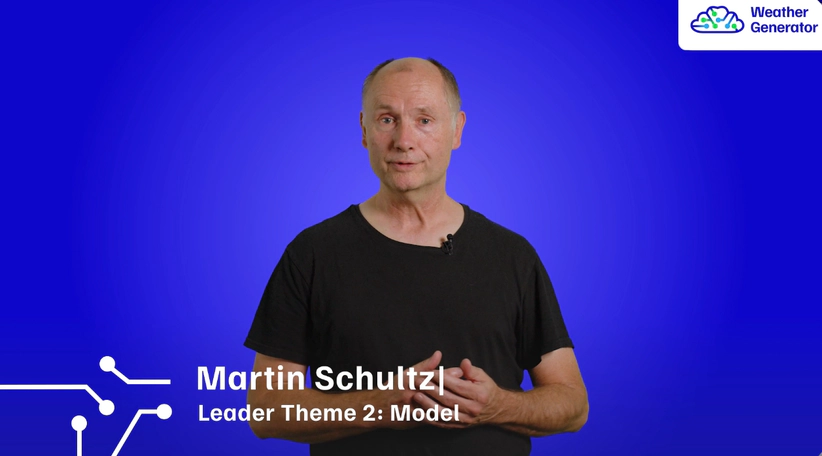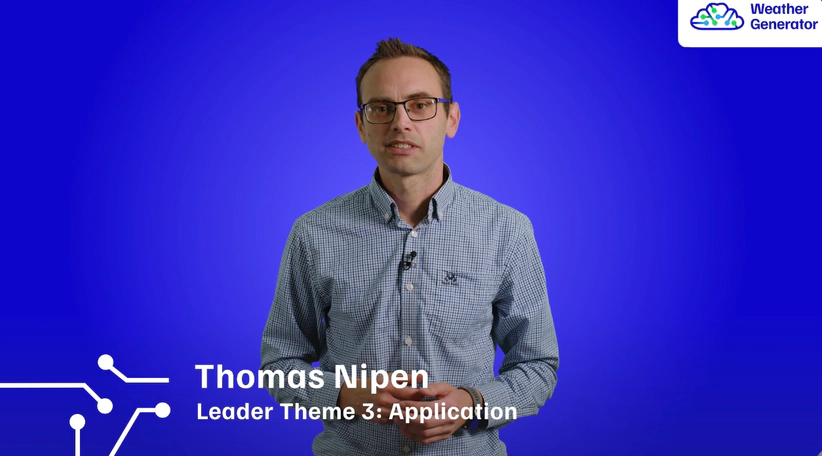Work Structure
The Weather Generator project is structured around ten tightly‑interlinked Work Packages (WPs) which are categorized into four main Themes: Data, Model, Application and Services.
Each Theme is led by a dedicated team but designed to interoperate seamlessly, ensuring that advances in one area immediately reinforce progress in others.
Collecting the Data
About the Theme
Theme 1 Data focuses on gathering and preparing all the data used by the WeatherGenerator model. Since this model is fully data-driven, having clean and high-quality data is essential to make sure it learns accurately.
Different weather tasks need different types of data. For example, predicting extreme weather events needs very detailed, local data. On the other hand, long-term planning, like for food security, needs broader data over longer periods. So, we combine many types of datasets that vary in detail and timing—like using different camera lenses to see the big picture and fine details.
To improve accuracy, we blend data from real-world observations and scientific estimates (called reanalyses). Right now, we’re using ERA5 and CERRA reanalyses, along with data from satellites, ground stations, aircraft, and ships. Soon, we’ll add radar and ocean data, and later, climate models like the DestinE Climate Digital Twin.
Challenges
A big challenge is that the data comes from many sources (like NASA, EUMETSAT, and national weather agencies), each using different formats. These formats are often too slow for machine learning, so we have to convert everything into faster, more usable formats—a process that takes time and effort.



